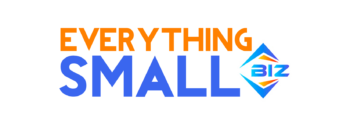Technology has made huge strides in how we run businesses. From accounting software to cloud-based collaboration tools, nearly every aspect of a company’s operations can now be digitised—and HR is no exception. One of the most significant developments in recent years is the growing use of Human Resource Management Systems (HRMS).
HRMS platforms promise speed, efficiency, accuracy, and data-driven decision-making. But here’s the big question: can they truly replace the human element in employee management, or are they just another tool in the HR toolbox?
Let’s explore both sides of the discussion to get a clearer picture.
What Exactly Is an HRMS?
First, a quick refresher. A Human Resource Management System (HRMS) is software designed to automate and streamline various HR tasks. These may include:
- Payroll and leave management
- Employee attendance and time tracking
- Recruitment and onboarding
- Training and performance evaluation
- Benefits administration
- Employee data management
In essence, HRMS software serves as a centralised platform where all employee information and HR processes live. It removes the need for bulky paperwork, countless spreadsheets, and time-consuming manual tasks.
The Benefits of HRMS Tools
Let’s be fair—there are many good reasons why HRMS tools are so popular.
1. Efficiency and Speed
Tasks that used to take hours or days can now be done in minutes. Think of payroll processing or leave approvals. With the right setup, employees can apply for leave, view their payslips, or update personal information without HR intervention.
2. Data Accuracy
Manual entry is prone to errors. A good HRMS tool reduces the chances of mistakes in employee records, salary calculations, or compliance documents.
3. Compliance Support
Staying compliant with labour laws and tax regulations can be tricky. Many HRMS platforms come equipped with features that help HR teams meet local and international compliance standards.
4. Better Decision-Making
With dashboards and real-time reports, HR managers and business owners get insights into trends such as employee turnover, absenteeism, or productivity. These analytics can be used to make smarter business decisions.
5. Employee Empowerment
Self-service portals allow employees to access their own data, reducing reliance on HR for routine requests and giving team members more control over their work-life information.
But What About the “Human” in Human Resources?
Despite all the perks, there’s a very valid concern: can a piece of software really understand people?
Employee management isn’t just about data and processes. It’s about empathy, communication, conflict resolution, and motivation. These are areas where software, no matter how advanced, can fall short.
1. Emotional Intelligence Can’t Be Programmed
HR professionals often act as mediators, mentors, or even counsellors. Whether it’s helping someone navigate workplace conflict or supporting them through personal challenges, a computer simply cannot replicate genuine empathy and understanding.
2. One-Size-Fits-All Doesn’t Always Work
Software operates on rules and workflows. But people are not always predictable. A flexible, compassionate human approach is sometimes needed, especially when dealing with sensitive matters like mental health, burnout, or personal grievances.
3. Losing the Personal Touch
An automated birthday greeting or service anniversary notification is nice, but it doesn’t replace a heartfelt note or a quick face-to-face chat. Building a strong company culture relies on genuine connections, not just digital acknowledgements.
So, Where’s the Balance?
Rather than seeing HRMS as a replacement for human interaction, it’s more realistic (and wise) to see it as a support system—a tool that frees up time and energy so HR professionals can focus on what they do best: caring for people.
Think of it this way:
- Let technology handle the routine. Automate payroll, attendance, and record-keeping.
- Let humans handle the relational. Focus on coaching, culture-building, conflict resolution, and team morale.
When HR professionals aren’t bogged down with repetitive tasks, they have more bandwidth to support strategic goals, nurture talent, and build trust within the company.
Common Misconceptions About HRMS
Let’s also clear up a few common myths around HRMS tools:
“HRMS will replace HR jobs.”
Not true. In fact, it helps HR teams work more effectively. The goal is to enhance productivity, not eliminate positions.
“It’s too complicated to set up.”
Many modern HRMS solutions are user-friendly and come with onboarding support. With a little guidance, most businesses can implement them with minimal disruption.
“It only benefits large companies.”
HRMS tools come in all shapes and sizes. There are plenty of solutions tailored for SMEs and startups with simple pricing models and scalable features.
Final Thoughts
HRMS tools are not here to replace the heart and soul of your people team. They’re here to make it easier for HR professionals to do what they do best—take care of people.
When used thoughtfully, an HRMS frees up time, eliminates tedious tasks, and gives you the data you need to make better decisions. But it’s still up to real humans to build trust, resolve conflicts, and create a workplace where people feel valued.
So, can HRMS tools replace the human touch? Not really. But they can certainly make the human side of HR even better.
